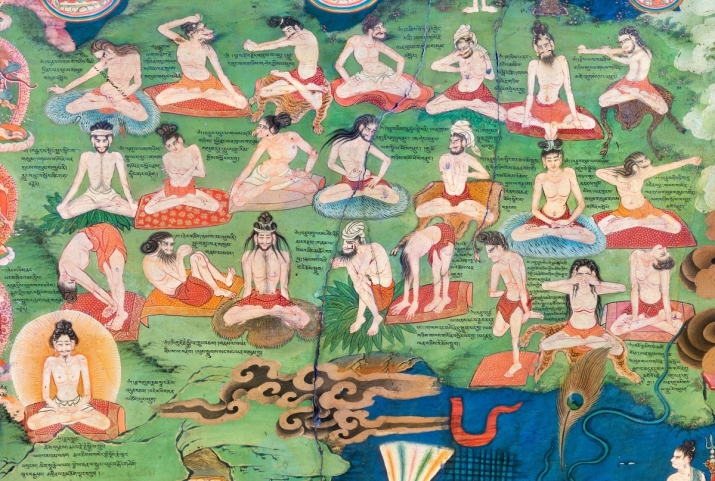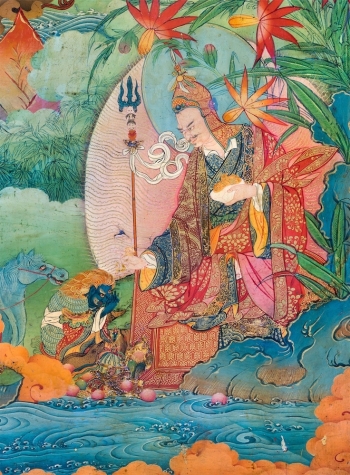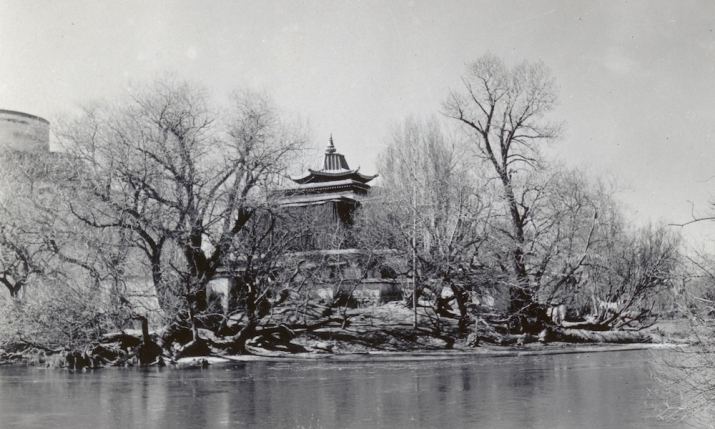When Tibet first opened to tourists in the mid-1980s, Laird visited the Potala Palace, once the Dalai Lamas’ winter residence, and came across the Lukhang. He was among the first Westerners to view this once secret place, and the first to photographically document it.
It is the murals in the uppermost chamber of the temple that Laird has recreated for the show. According to the Welcome Collection, this is the first time entire Tibetan wall murals have ever been displayed in a museum as transparencies.
“You go through a sort of trapdoor to the third floor and step into this room with murals covering three of the walls,” recalled Laird. “I went in the late afternoon and the light was reflecting off the pond and coming through the small windows as little glittering shafts.” (The Guardian)
“I was stunned by the colours: pink and gold and white and lapis,” said Laird of the murals. They featured yogis demonstrating various postures, the 84 mahasiddhas or tantric masters, Buddhas, waterfalls, forests, animals, and numerous symbols he didn’t understand. “That afternoon had a huge impact on me,” he revealed. (The Guardian)

















